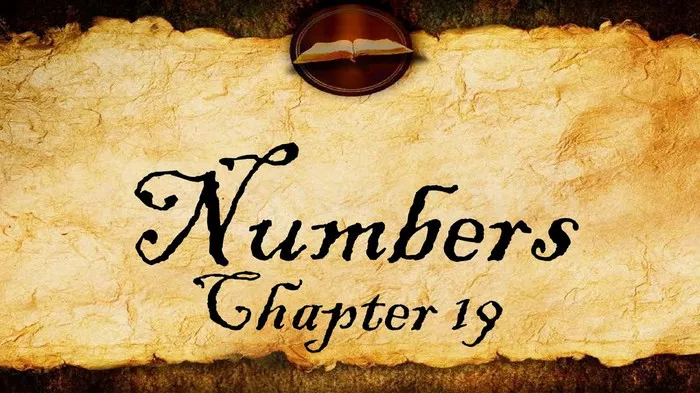Numbers Chapter 19 Summary
Numbers 19 details God‘s instructions for the red heifer ritual—a purification ceremony for those defiled by contact with death. A spotless red cow is burned outside the camp, and its ashes are mixed with water to create a “water of cleansing” (19:1-9). This solution is used to purify anyone who touches a dead body, with the process taking seven days (19:10-13). The chapter emphasizes how serious God considers ritual impurity, as those who refuse purification face being “cut off from Israel” (19:20).
This unusual sacrifice—where the heifer is burned completely unlike other offerings—highlights God’s holiness and His provision for cleansing from the contamination of death. Unlike typical sacrifices at the altar, this one occurs outside the camp, foreshadowing Christ’s crucifixion (Hebrews 13:11-13). The ritual teaches that sin’s defilement requires God’s prescribed remedy, pointing forward to the ultimate purification through Christ’s sacrifice. The chapter reinforces that approaching a holy God demands both reverence and obedience to His cleansing process.
Bible Numbers Chapter 19
Welcome to read Numbers Chapter 19. Here is the list of Numbers Chapter 19:
What Does Numbers Chapter 19 Teach Us?
Numbers 19 introduces the solemn ritual of the red heifer, a unique purification offering designed to cleanse Israelites from the defilement of death. This chapter, rich in symbolism, offers profound spiritual lessons about sin, holiness, and God’s provision for cleansing.
Key Lessons:
The Contagious Nature of Spiritual Defilement
Contact with death (a symbol of sin’s curse) rendered a person ceremonially unclean (19:11-13). This illustrates how sin corrupts and separates us from God’s holiness. Even unavoidable contact with death required purification, showing that defilement is inevitable in a fallen world.
God’s Provision for Cleansing
The red heifer’s ashes mixed with water provided a way for restoration (19:17-19). Unlike other sacrifices, this one was performed outside the camp, pointing ahead to Christ’s crucifixion (Hebrews 13:11-13). God always provides a way back to purity for those who seek it.
The Cost of Purification
The heifer had to be perfect, unblemished, and never yoked (19:2), symbolizing the flawless sacrifice required to atone for sin. Its blood was sprinkled toward the tabernacle (19:4), showing that cleansing comes through God’s ordained means—not human effort.
The Seriousness of Ignoring Cleansing
Those who refused purification were “cut off from Israel” (19:13, 20). This warns that rejecting God’s remedy for sin leads to separation from His presence.
A Foreshadowing of Christ’s Sacrifice
The red heifer’s ashes provided ongoing purification, just as Christ’s sacrifice offers eternal cleansing (Hebrews 9:13-14). The ritual outside the camp prefigured Jesus, who suffered outside Jerusalem to sanctify His people.
Conclusion
Numbers 19 teaches that God is holy, sin is defiling, and only He can provide true cleansing. The red heifer ritual was not just about physical purification but a spiritual lesson:
Sin’s contamination is serious, and we cannot approach God without cleansing.
God Himself provides the remedy, foreshadowing Christ’s ultimate sacrifice.
Obedience is required—those who disregarded the purification process faced severe consequences.
For believers today, this chapter reinforces that we are cleansed only through Christ’s blood (1 John 1:7). Just as the Israelites needed the ashes of the heifer, we need Jesus’ atonement to be made holy. The ritual reminds us that God’s holiness demands a response: repentance, faith, and reliance on His provision for salvation.
Related topics:


